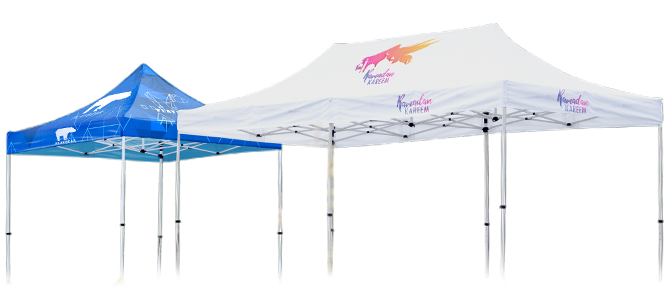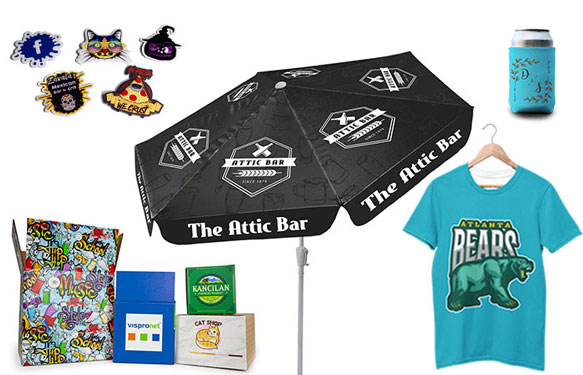FREE DESIGN SERVICES | Risk-Free Ordering with Pay Later at Checkout | Free Proof with Every Order | Special 3-Day Turnaround
Tent Stakes & Anchors
We offer a wide variety of different tent stakes and tent anchors so that you can keep your tent grounded no matter what the environment throws at you. Options include:
- Steel tent stakes
- Plastic tent pegs
- All options include: 4 stakes, nylon webbing, and carry bag
- Nylon webbing set is also sold separately
Tent Stakes for All Conditions
Our commercial tent stakes are built to stay secure no matter the conditions present. Available options include both steel and plastic stakes, as well as a nylon webbing kit to help keep your tent tied down.
With the good materials and design of our ground stake kits, you’ll find that bent stakes aren’t a problem for you anymore. All options measure at least 9 inches, so you know you have enough stake to sink it down deep where you need it.
Types of Canopy Stakes We offer
We offer two different types of tent stakes:
V-stakes. Think of these as versatile utility stakes. They have a large surface area, so they can easily be used with soft soil or more densely packed soil. The cross piece also makes it excellent for use with sand, as the guy line has to slide along the stake before it pulls out of the sand -- the cross piece will help keep it anchored.
Round wire stakes. The most basic shape of tent stake out there, these spikes are designed for general use. However, the thin profile of these tent spikes also makes them excellent for slipping between cracks when it comes time for hammering down in rocky areas -- see below for more info.
What Are the Best Tent Stakes for Rocky Areas?
Depending on where you’re setting up your event tent, you might have to stake down in a rocky area. The thin round wire stakes of our Tent Stake Kit Economy are perfect for slipping between cracks and crevices in the rock so that you can anchor your tent down properly.
The heavy-duty steel construction of these tent spikes makes them great for hammering down into rocky outcroppings – especially if you’re dealing with sedimentary rocks like shale or sandstone. You can even hammer them down into concrete or bitumen if you use the right technique.
How Do I Hammer Tent Anchors Into Concrete?
In order to properly hammer your ground stakes down into concrete, a little setup is required. First, you have to drill down into the concrete. We recommend holes about half an inch to an inch in diameter (depending on the thickness of your tent stake) and about as deep as your stake is long. So, if you're using 9in canopy stakes, then you want to drill a 9in hole.
Once your hole is drilled, you fill it with crushed stone and then re-patch it with asphalt or concrete chunks. After this is done, you can drive your anchor into the hole you drilled. The crushed stone works to hold the tent anchor in place when you hammer it in.
What Are the Best Tent Stakes to Use for Windy Weather?
When it comes to staking down your tent in anticipation of windy weather, we recommend using the 16” version of our Tent Stake Kit Premium. Why? These are heavy-duty stakes. You need to use tent anchors that can withstand the higher pressures of high winds. The best way to do this is by using a a set of long, heavy duty ground stakes – the longer the stake, the more the wind has to pull in order to dislodge your stake from the ground.
Additionally, using multiple anchors and webbing lines off of one tent pole gives you double or triple the power, depending on how many canopy stakes you use. This is because the wind has to dislodge multiple stakes before that side of the tent starts to waver.
Angling Your Ground Stakes Properly
When it comes to driving your tent spikes into the ground, it’s important that you angle them properly. The best angle to use when anchoring your stakes to the ground is 90 degrees to the angle of the force pulling against the stake. So, if the force is running along the ground with no lift (as might be the case with a light wind), you can just drive the stake directly into the ground.
If the force rises away from the ground, however, it’s important to ensure that your stake remains at a right angle to any force acting on it – in most cases, this is going to be the tent rope. So, if your tent rope is at a 45 degree angle, then you want to set your stake into the ground at a 135-degree angle to ensure that it doesn’t move.
Tent Stakes for Sand
Staking your tent down in the sand is a little different from staking it out in rocks or concrete. When it comes time to set up your tent, use your metal ground stakes more like dead-weight anchors than actual stakes. Here’s how you do it:
- Set up your tent as you would normally.
- Attach webbing or other guy lines to the tent legs.
- Tie the other end of the webbing to the middle of your canopy stakes. Make sure that you’re using heavy duty stakes, like our 16in steel tent anchors.
- Bury the anchors in the sand far enough out that the webbing is taut and doesn’t have any slack. We recommend that you bury the tent stake down far enough that it doesn’t come out easily -- about a foot minimum.








🌷 Spring Savings Sale: Get 10% off Sitewide w/ code: APRIL25 🌷 Details here.
- Vispronet
- (877)-822-0201
- Monday - Thursday: 8am - 6pm ET
- Friday: 8am - 5pm ET
- info@vispronet.com
© 2004-2025 Vispronet.com
CS-680C61CAD7852























